
Prerequisite Reading
We strongly recommend reading of our post “The Need for the Protestant Reformation” prior to reading this or any of the other Reformation posts we have written.
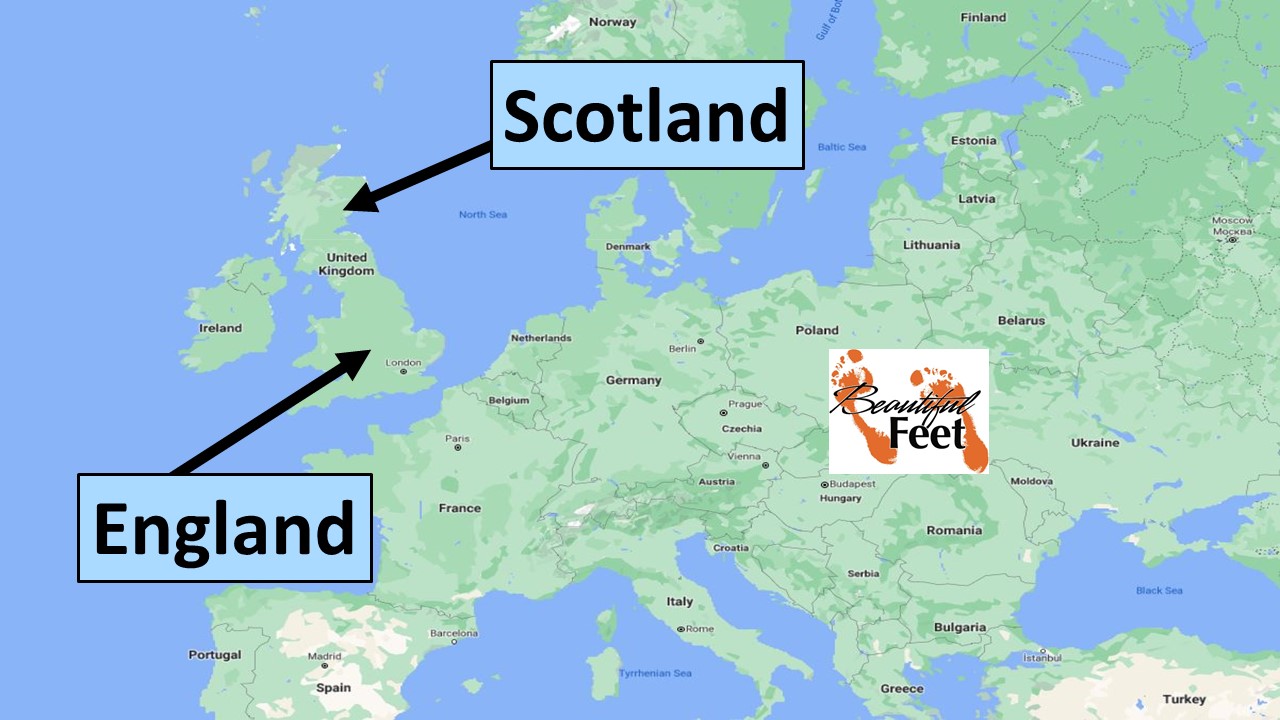
Conditions of Scotland at this Time
► Scotland at this time was very dark.
► There were very few towns.
► It was thinly populated.
► There was degrading poverty.
► There was a lack of education.
► There was no middle class.
► Feudalism was still in place;
….• The baron owned the land.
….• He protected the people.
….• The people tilled the baron’s land.
….• They fought his battles.
….• They were serfs (slaves).
The spiritual condition was similar to the socioeconomic system. The church leaders were the superiors.
► The people were in bondage to superstition.
► They bowed in slavish obedience.
Reformation: Intellectual, Political, and Religious
For centuries the Catholic Church had kept the minds of men imprisoned. Art, science, and even literature were controlled by the Church, denying any freedom of thought or liberty.
Half of the wealth of the country was in the hands of the clergy. Bishops and abbots had the same level of extravagance surrounding them as the wealthiest of nobles.
The clergy were themselves uneducated. An example is a statement made by the Scottish Bishop of Dunkeld, who
thanked God that he knew neither the Old nor the New Testament.
Catholic Priests
They lived openly immoral lives. They didn’t have wives, but they openly lived with mistresses with whom they had children. That is just one example of the hypocrisy and double standards that the “celibate” Catholic priests lived by.
If priests ever did conduct church services, it was in Latin, a language which the people, and often the priests themselves, didn’t even know. The countryside was flooded with uneducated monks who robbed the poor for their existence.
Certainly, out of that mass of humanity there were some who had never bowed the knee to Baal, and one of them was the Catholic priest, John Knox.
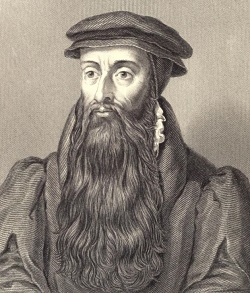
John Knox: Catholic Priest
turned Protestant Reformer
About the Reformer—John Knox
► Born 1505 in the town of Haddington, Scotland
► Entered the University of Glasgow at age 17
► Ordained as a Catholic priest around 1536 (age 34)
► Served as a tutor to the children of wealthy families and didn’t serve in churches
► At middle age he learned Greek and Hebrew while in exile in Geneva, Switzerland
► Became the founder of the Presbyterian Church of Scotland
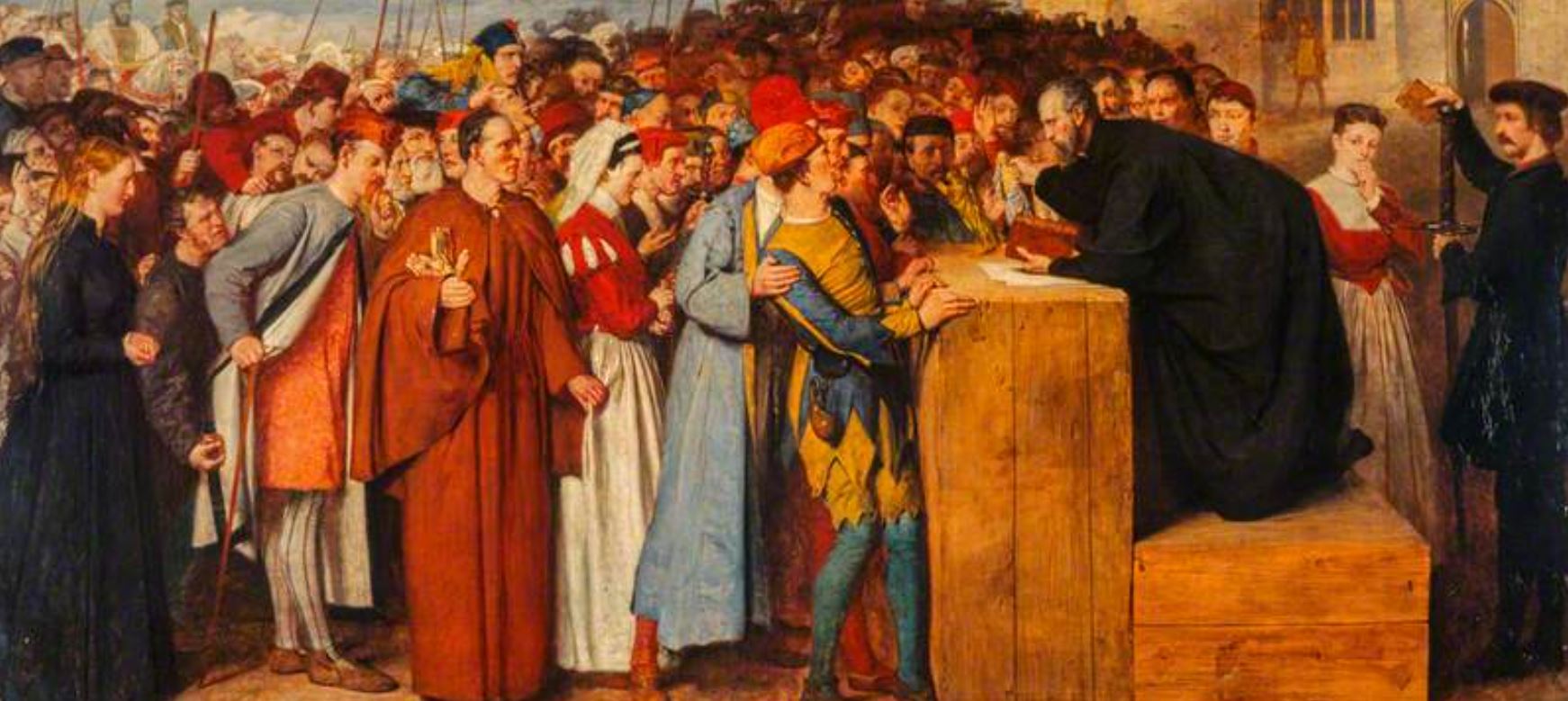
George Wishart preaching against Mariolatry. Behind him in black stands John Knox, holding a sword to protect Wishart while he preaches.

George Wishart
33-Year-Old Martyr
George Wishart, a young Scottish reformer who had fled Scotland to Germany and Switzerland in 1538 to escape punishment for heresy, returned in 1544. He is the one who possibly shared the Protestant message with Knox, and they became close associates—with Knox becoming his bodyguard, carrying a two-handled sword to defend him.
With the persecution against Protestants increasing, Cardinal David Beaton had Wishart arrested, put on trial, and burned at the stake. At 33 years old, Wishart became one of the first Protestant martyrs of Scotland.
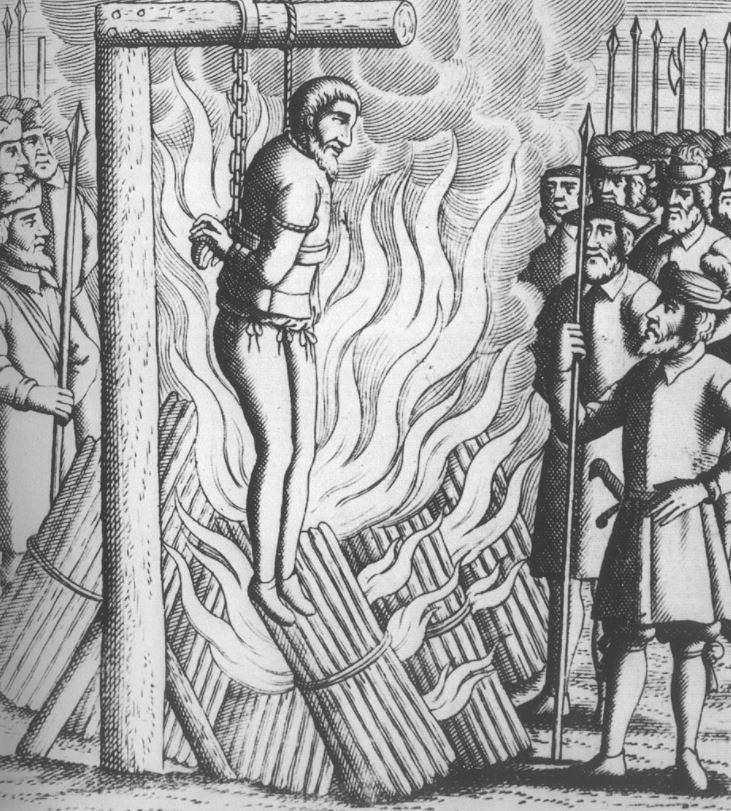
Wishart being burned alive

Cardinal David Beaton
(1494 – 1546)
Like many of these Catholic priests and Church leaders, Cardinal Beaton, though having taken an oath of celibacy in the Catholic Church, had a long-term mistress (Marion Ogilvy) with whom he had 8 children. The deplorable double standards of these Catholic leaders enraged those seeking for reformation within the Catholic Church.
Once these illegitimate children matured, and before they could work in the Church, the pope would write a waiver declaring them legitimate. These priests would put on trial and then execute Reformers for preaching against celibacy, while at the same time they themselves violated their own oath of celibacy.
Murder of Cardinal David Beaton
On May 29th, 1546, a group of men broke into St. Andrews Castle, dragged Beaton from his bed, and killed him. This action was partly political, as well as to get revenge for the execution of Wishart.
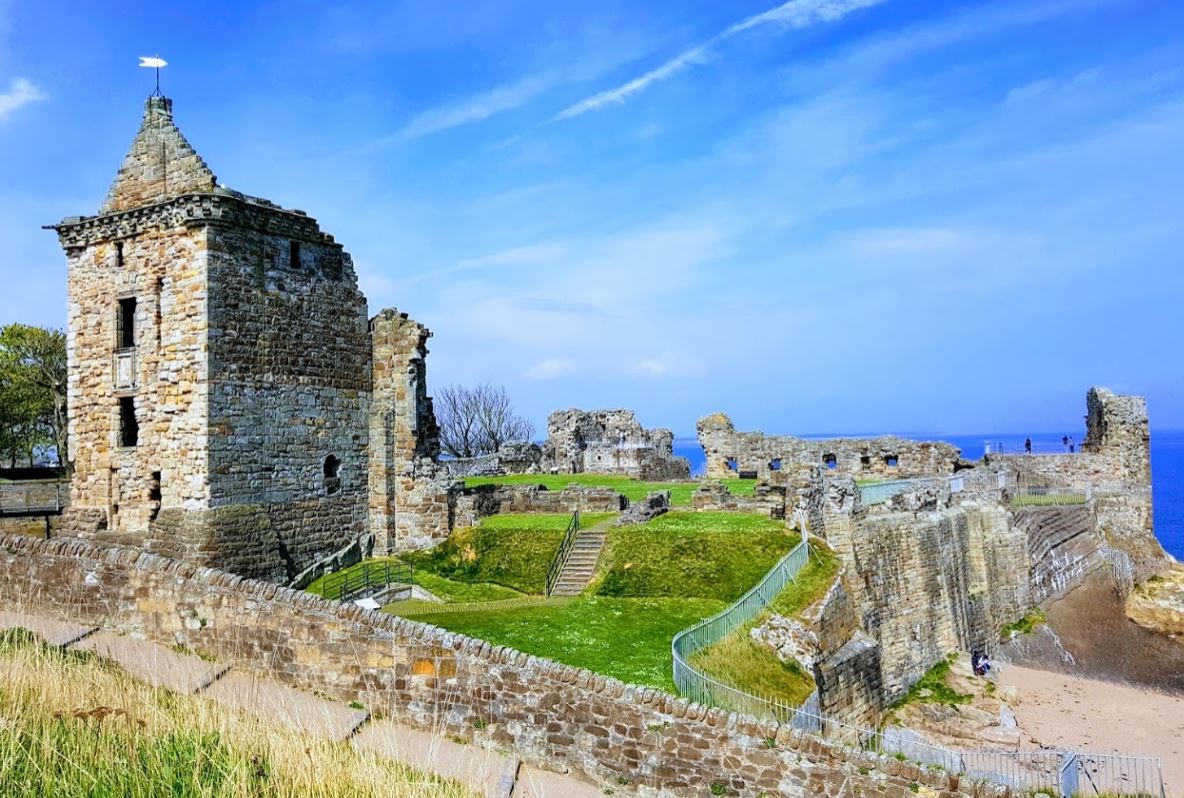
Outlaws and Reformers
The group that killed Cardinal Beaton assumed control of the castle and moved into it with their families—about 150 men in all. Knox was invited to bring the students he was tutoring and live at the castle. He arrived on April 10, 1547.
John Rough, a chaplain of this newly established garrison of St. Andrew’s Castle, was preaching in the parish church. With Knox being in attendance, Rough pointed out Knox’s qualifications to lead and become the chaplain of the garrison, and asked all present to designate him as such. The acceptance was unanimous, and Knox, being unprepared and overwhelmed by what just happened, ran out, weeping. In time he accepted his calling.
During his first sermon at the Parish Church, he struck his ax into the root of the Pope’s authority. Using the 7th chapter of Daniel, he called the Pope the Antichrist. In time he preached against all the doctrinal errors of the Catholic Church: Mass, Purgatory, prayers for the dead, etc.
French Galley
Captured & Enslaved (1547-1549)
Mary of Guise, Regent of Scotland, arranged for King Henry II of France to send a force of 21 ships (galleys) to overthrow the garrison of St. Andrews. With Knox and others holed up in the castle, the artillery was too much, and on July 31, 1547, they surrendered.
The protestant nobles, along with Knox, were taken prisoner and forced to row in the French galleys. For 19 months Knox was chained to an oar, and was finally released in February 1549, at the intervention of King Edward VI of England.
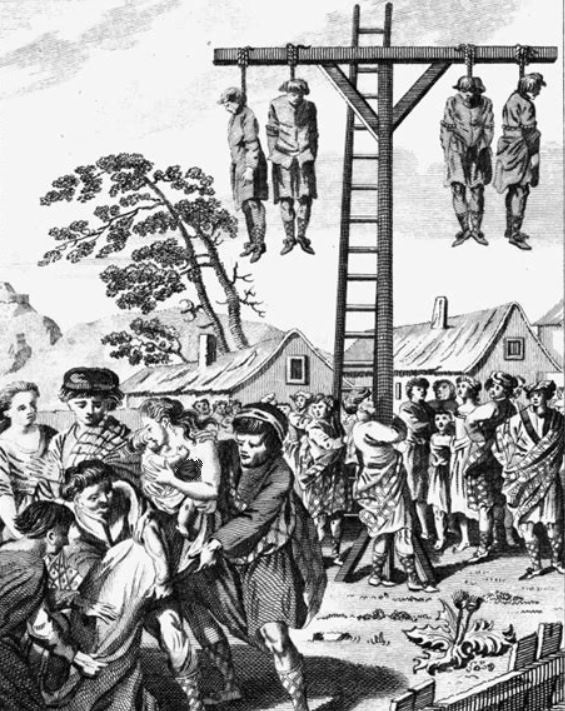
Execution for eating a goose (1543 in Perth)
Because they ate a goose on a Catholic fasting day, William Anderson, Robert Lambe, James Founleson, and James Hunter were hung. James Raveleson was burned alive, and Helen Stirke (forefront), had her child taken from her, was sown into a bag and then thrown into the river. Foxe’s Book of Martyrs: Vol. II, Page 4-5
Exile in England (1549-1554)
Not being able to return to Scotland at the time, Knox was licensed as a minister in the Protestant Church of England, and in April 1549, he began ministering in Berwick-upon-Tweed. Towards the end of 1550 Knox was appointed a preacher of St Nicholas’s Church in Newcastle upon Tyne. The following year he was appointed one of the six royal chaplains serving the King.
In 1552, Knox was one of the six who rewrote the “Articles Concerning an Uniformity of Religion,” which became the basis of the “Thirty-nine Articles” of the Church of England.
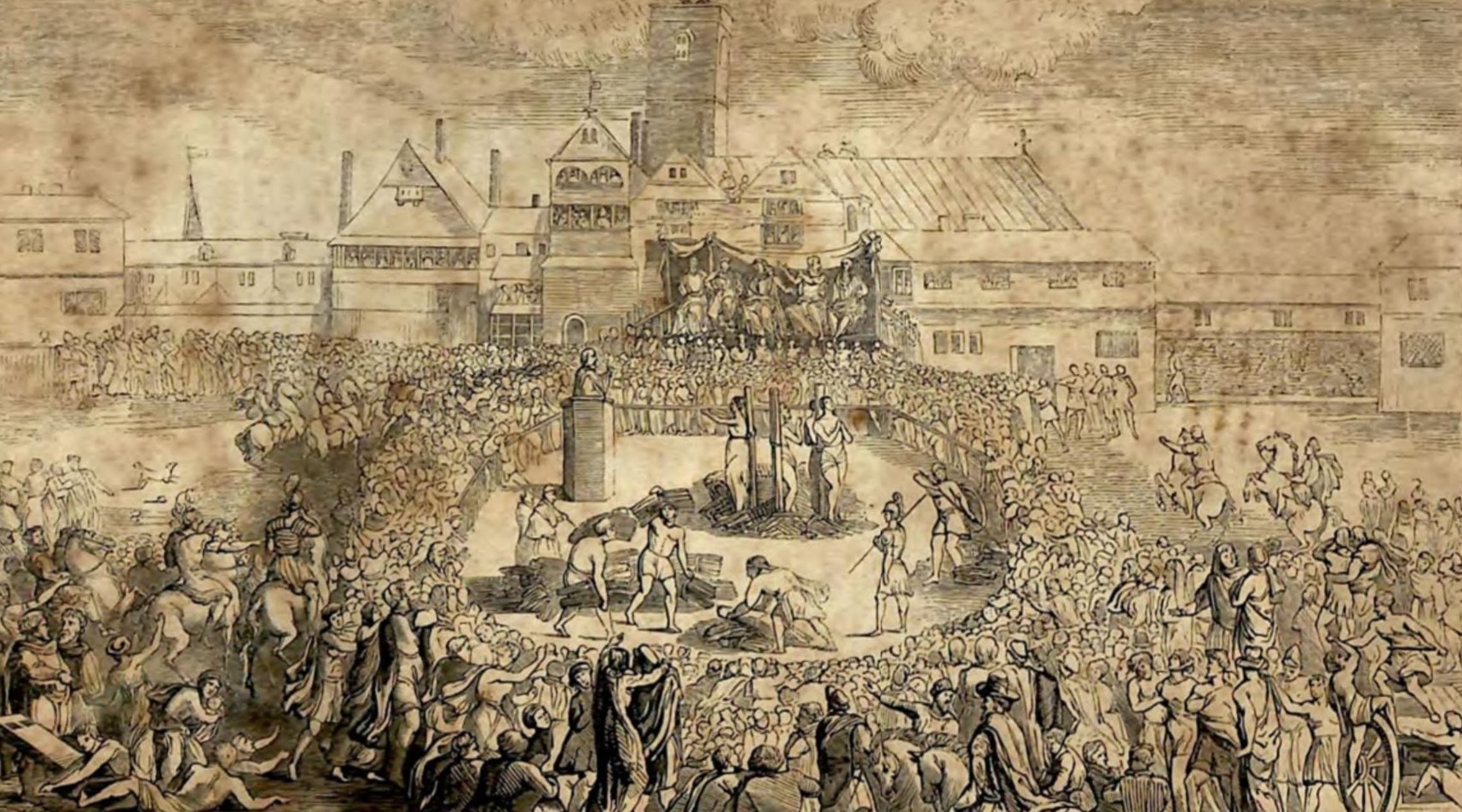
Anne Askew (aged 25), one of many protestant martyrs, was burned at the stake at Smithfield, London, on July 16, 1546, along with 4 others. This was following her being stretched on the rack. The Acts and Monuments of John Foxe; Page 550.
Exile on the European Continent
King Edward VI passed away on July 6, 1553, allowing for the pro-Catholic Mary Tudor (Bloody Mary) to ascend to the throne. Her persecution against protestants was ruthless, with close to three hundred being burned at the stake, and a thousand more forced into exile, Knox being one of them (Marian Exiles).
Knox served English-speaking congregations in Frankfort, Germany and Geneva, Switzerland, and stayed in Geneva for three years, learning from John Calvin. Knox then received a message to return to Scotland to lead the reformation movement, and he at once complied, and arrived in Edinburgh, Scotland on May 2, 1559.
Revolution and the End of the Regency (1559-1560)
Knox directed everyone supporting the reformation movement to meet at Perth, where he preached a fiery sermon in St. John the Baptist Church. It roused those assembled with such determination that before that night fell, each church in town had every sign of Catholicism destroyed.
Mary of Guise, at Stirling, infuriated with the actions of the reformers, sent French troops (backed by Rome) to deal with them. Knox immediately wrote to all the nobles of Scotland, saying,
Unless ye join yourselves to us, as of God ye are reputed traitors, so shall ye be excommunicated from our society. The glory of the victory, which God shall give to his Church, yea, even in the eyes of men, shall not appertain until you.
Such powerful words emboldened those who were previously wavering, and large numbers joined themselves to the Reformers. When the French arrived in Perth, a treaty was agreed to, that the reformers would disperse, on condition no one would suffer on account of the past, and that all questions about religion should be considered by the next Parliament.
Having such a treaty in hand, Knox used his time preaching from place to place, spreading the message of reformation. At St. Andrews, he preached in the Parish Church, and so overwhelming was his sermon, that the people arose as one and totally destroyed every Catholic symbol remaining in the building.
When Knox arrived in Edinburgh, he found that the townspeople had already ransacked the monasteries, leaving nothing but the walls standing. Similar revolutionary work continued throughout central Scotland.
On October 24, 1559, the Scottish nobility formally deposed Mary of Guise from her position, and with her death on June 10, 1560, the French withdrew, leaving Scotland for good.
Reformation in Scotland and Knox’s Last Days (1560-1572)
On August 1, 1560, the Scottish Parliament met in Edinburgh, where within just a few days, they unanimously voted in favor for the Protestant faith, abolishing Roman Catholicism and banning Catholic Mass. Knox put into motion the Book of Discipline, as well as structures on how the churches of Scotland were to be governed.
Scotland continued to go through periods of ups and downs, with high drama involving Mary, Queen of Scots, the death of Knox’s wife, and then his remarriage to the 17 year old, Margaret Stewart.
Legacy of John Knox
► He and his followers overthrew Roman Catholicism in Scotland.
► He established Presbyterianism in Scotland, rather than the English Anglicanism (Church of England).
► Knox is considered the theoretical founder of the Presbyterian denomination, whose members number millions worldwide.
Sources
► Foxe’s Book of Martyrs by John Foxe
► John Knox by Wikipedia
► John Knox and the Destruction of the Perth Friaries by Douglas Somerset
► John Knox’s History of the Reformation in Scotland by William C. Dickinson
► Life of John Knox by Thomas M’Crie
► Revivals Their Laws and Leaders by James Burns
► The Acts and Monuments of John Foxe
► The Ten Greatest Revivals Ever by Elmer Towns
Videos
► Calvin, England and Scotland by Ryan Reeves
Return to List of Revival Stories
Chet & Phyllis Swearingen
(260) 920-8248
romans1015@outlook.com
Beautiful Feet
P.O. Box 915
Auburn, IN 46706


